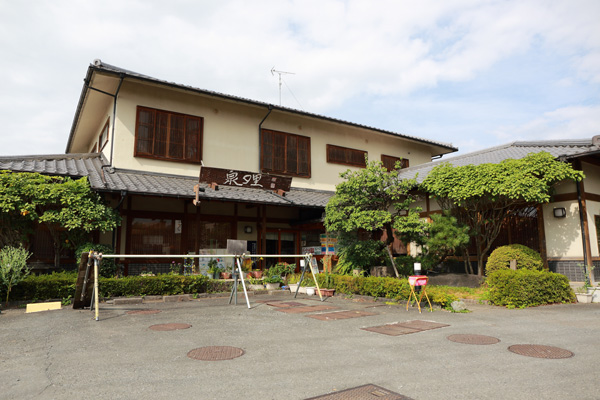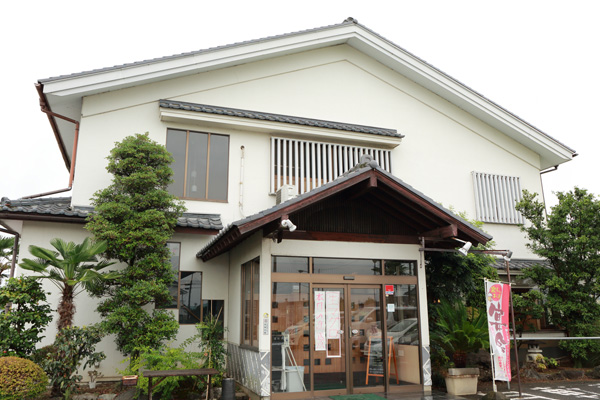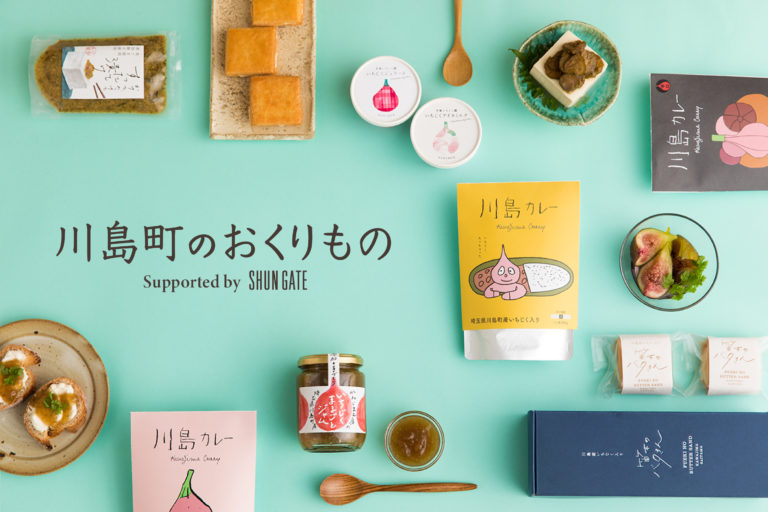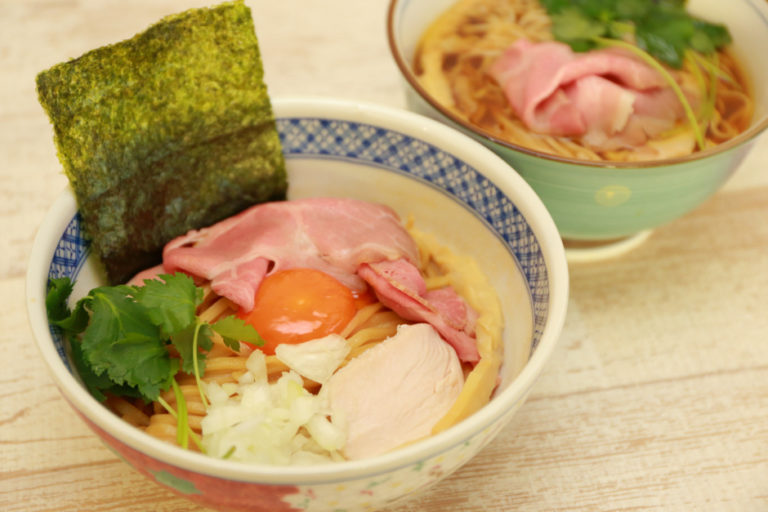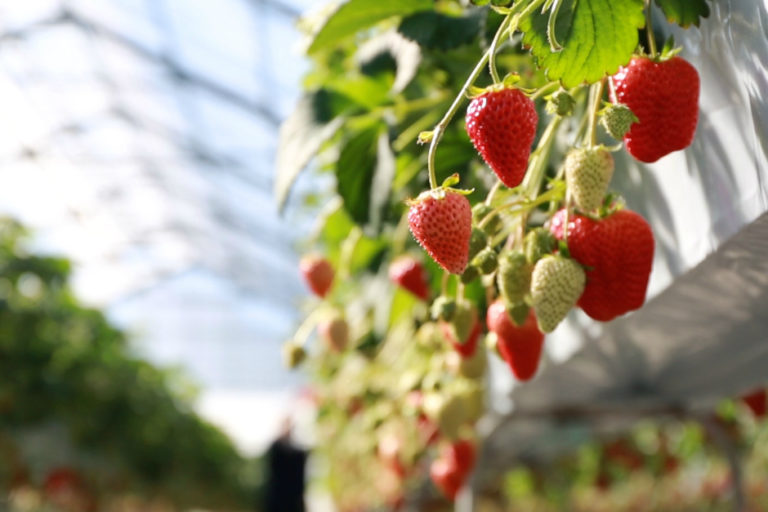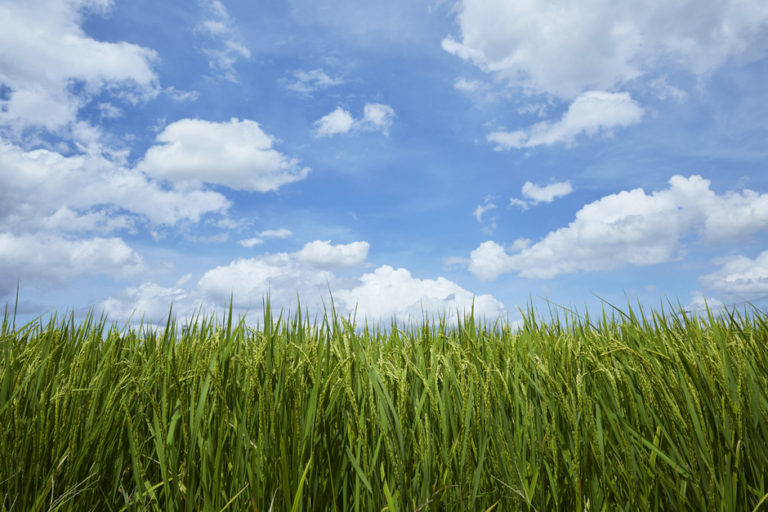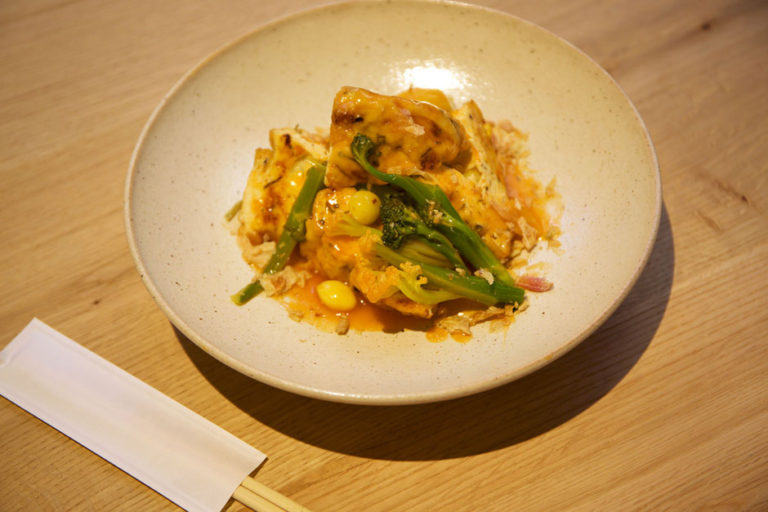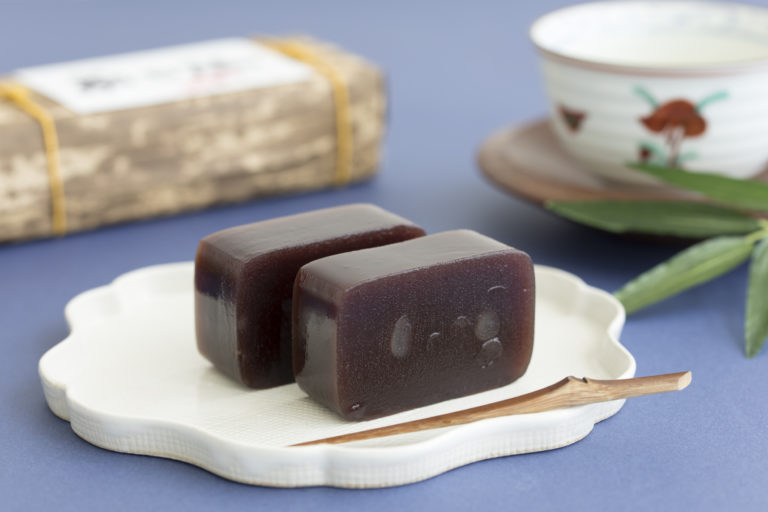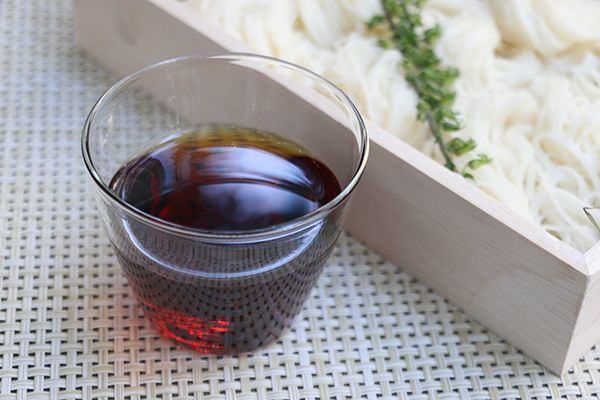Bringing a Local Taste to Modern Times: Kawajima’s Suttate Udon noodles and Gojiru soup
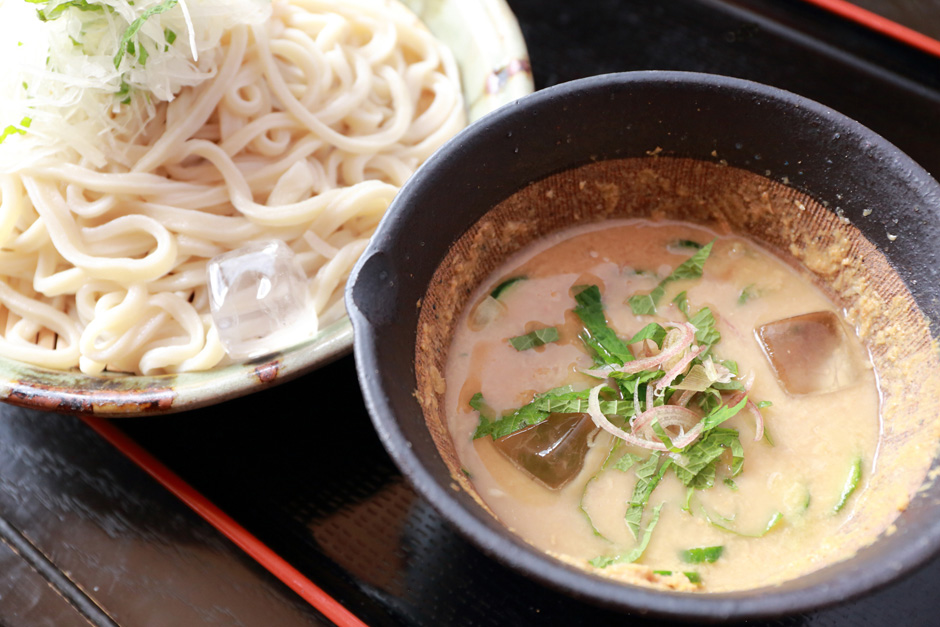
Surrounded by four rivers, the local residents of the town of Kawajima, Hiki District in Saitama Prefecture have long enjoyed local dishes called suttate in summer and gojiru in winter. These two dishes are said to have been deeply influenced by Kawajima’s rice farming tradition.
Nutritious dish suttate originating from rice farmers
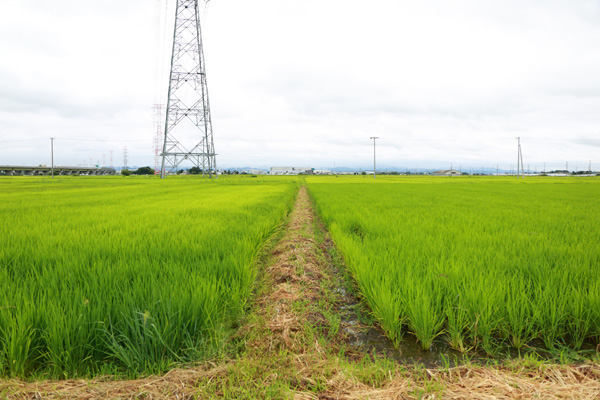
Because of its geological makeup, Kawajima had long suffered from repeated flooding. Flooding gave Kawajima not only damage, however, but a fertile ground suitable for agriculture. Before long, rice farming started in Kawajima and in the Edo period (1603-1868) the town had such developed rice paddies that they even presented the rice to the Kawagoe Clan. Even today, anyone who visits the town can see water-filled rice paddies everywhere as they drive around.
Farmers in Kawajima used to enjoy suttate during the summer months. It is udon noodles dipped in a sauce of sesame seeds, miso and mashed local summer vegetables mixed with cold water. In the areas along the Arakawa River, people used to call the dish suttate, a slurred version of suritate (meaning “freshly mashed” in Japanese) and that was how the dish got its name.
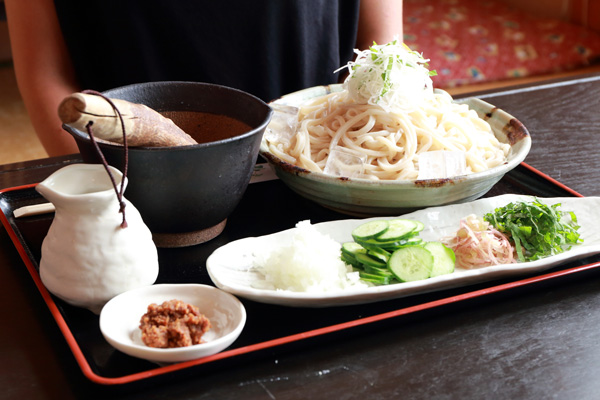
There is a reason why suttate became a household dish in Kawajima. For a long time, Kawajima had been a place of golden sesame production and every home was also making rice and miso. Agriculture was rampant and in the summer it was easy to get a hold of perilla leaves, cucumbers and Japanese ginger. Udon noodles were used instead of rice, because many farmers grew wheat after harvesting rice until the next rice planting season started.
In those days farming wasn’t as automated as it is today. Working under the hot sun in the field was very hard work. But cold udon noodles with cold dipping sauce were appetizing and had a delightful smooth feel inside the throat, when farmers were exhausted with heat and had little appetite. Moreover, miso and sesame were loaded with quality plant proteins, vitamins and minerals, so they made the best nutritional source.
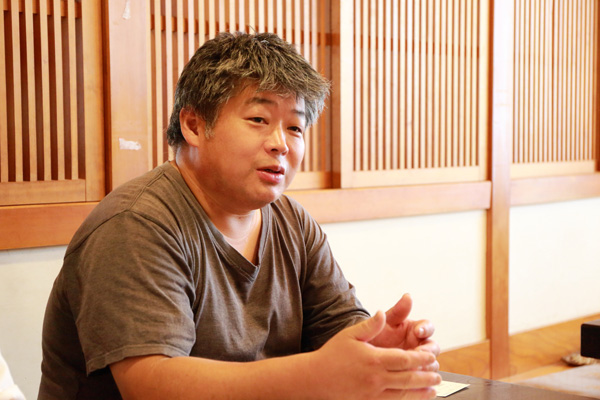
Interestingly, every household had their own suttate recipe. People had been enjoying suttate in many creative ways, adding pickled plum vinegar, or a can of tuna, or adding sugar to the dipping sauce. But suttate had remained a household dish and did not leave the bounds of the town.
It was 2008, at a gourmet contest, The 4th Saitama Local Street Food Championship, that Kawajima’s suttate came into the spotlight as it entered the contest as Kawajima’s local gourmet food. Koji Adachi, who runs a local udon and soba noodle restaurant called Izumi No Sato, received a request from the Kawajima Chamber of Commerce to develop a suttate recipe for the contest.
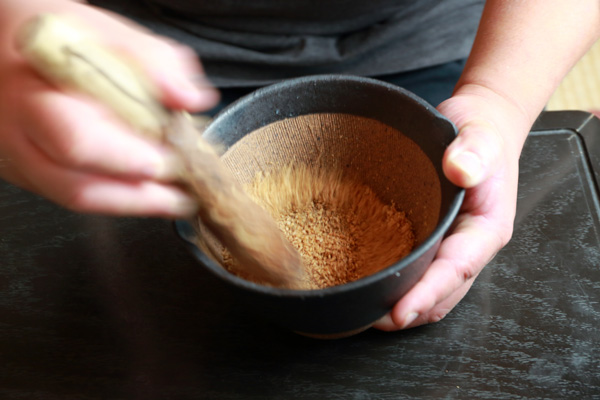
“I am from Soka in Saitama, so suttate was an unknown food to me. It seems it had been eaten in Kawajima for at least 40 or 50 years, but it being home cooking, there was hardly any material I could turn to, to study its history. I asked a farmer I knew to cook it for me, but it tasted rather bland. I thought it wouldn’t stand a chance if it was just a dipping sauce of several ingredients and cold water.”
After much trial and error, Adachi developed a new suttate that featured dashi (fish and seaweed broth) instead of cold water.

Thanks to Adachi’s contribution, Kawajima’s suttate won fourth place in the fourth contest, which for Kawajima was the first-ever entry. In the sixth contest with some 90,000 visitors, it finally won the championship.
Today, suttate is served at 13 restaurants in Kawajima, which are committed to the town’s suttate mission, including Izumi No Sato. It is up to each chef what kind of suttate they want to serve, and each restaurant has their unique suttate. Izumi No Sato serves the standard, you-can’t-go-wrong dipping sauce, with golden sesame seeds, miso, cucumbers and onions. The soft and chewy hand-kneaded noodles capture the rich dipping sauce well, and with every bite, the sesame and sauce flavor fill our mouths. The fun part unique to this restaurant is that customers are given a mortar and pestle to grind sesame seeds themselves.
Body-warming taste of the winter: Kawajima Gojiru
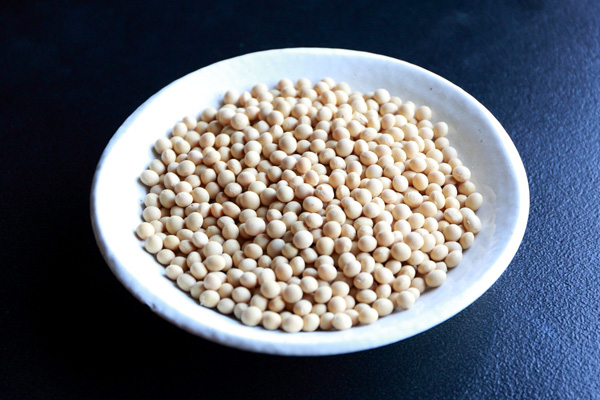
If suttate is the local residents’ favorite summer dish, gojiru is their favorite winter soup. The key factor of gojiru is ample amounts of soybeans. Grown on ridges and harvested in the autumn, they are an important ingredient of gojiru. Commonly called “beans of the field,” soybeans were an important source of protein for farmers during the winter months in times when meat and fish were not readily available.
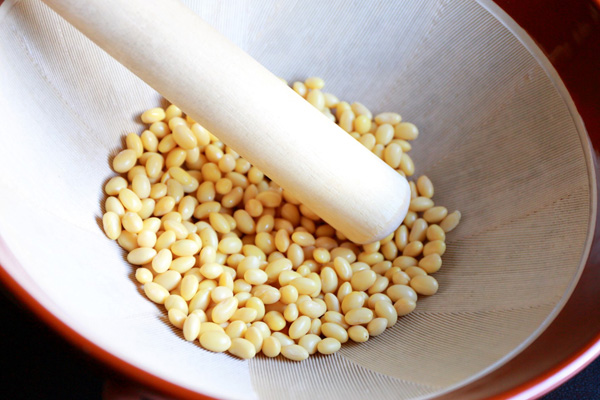
Gojiru is a lot like miso soup with mashed soybeans. It is a local dish, but it takes a lot of effort to prepare, so not many people make it at home nowadays.”
The Chamber of Commerce decided to create the brand Kawajima Gojiru to pass on to future generations as the town’s local dish and establish rules whereupon restaurants started serving gojiru under those rules.
(1) The restaurant must use fresh domestic soybeans.(Never used boiled or GMO soybeans)
(2) The restaurant must use dried yam stems, a preserved food from farming villages.
(3) The restaurant must serve the gojiru in a clay or steel pot.
(4) The restaurant must put at least 10 vegetables in the gojiru.
(5) The restaurant must have their unique characteristics and offer their distinct flavor.
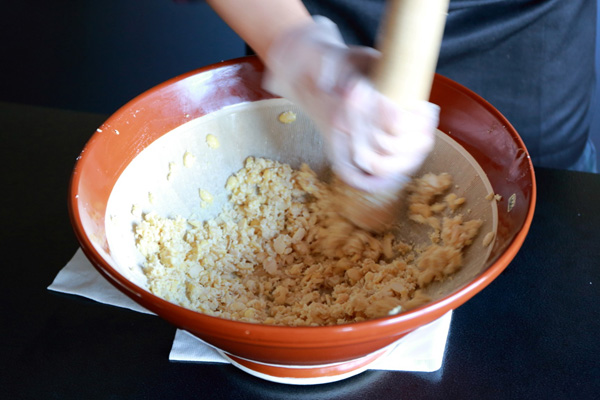
Izumi No Sato puts daikon radish, carrots, green onion, garland chrysanthemum leaves, burdock roots and chicken in their gojiru. The hot ingredients cooked in the pot warm our body from within—from the first mouthful.
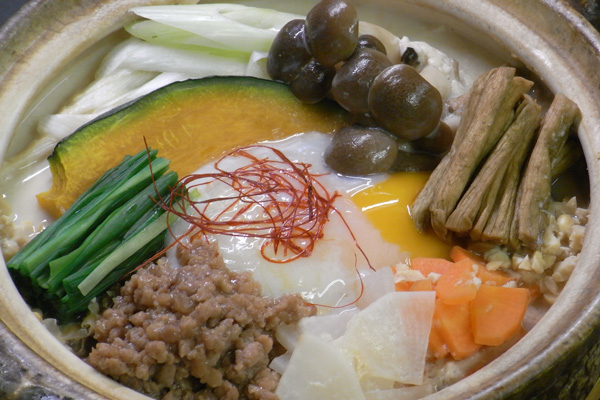
“The unique feature of Kawajima Gojiru is the crispy dried yam stems. Gojiru rarely makes it to household dinner tables, so it is very well received by local customers as well. It has been covered by the media quite often. I think that was a good opportunity to promote suttate and gojiru to people inside and outside the town,” says Adachi.
Still evolving: Suttate and gojiru
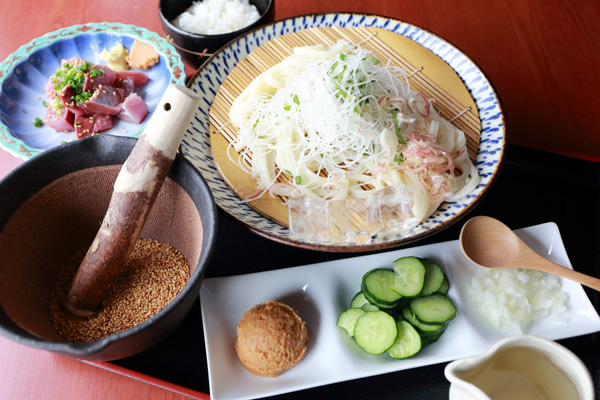
Participating restaurants serve suttate from May to September (some restaurants from April to October) and Kawajima Gojiru from November to March of the following year. Every restaurant offers suttate and gojiru of various recipes.
A Japanese restaurant in town, Soma Kawajima Honten, is one of the participating restaurants. Soma’s selling point is none other than fresh seafood. The owner himself even goes to such lengths as to visit the fish market in Numazu, Shizuoka Prefecture to buy the seafood. Soma serves suttate and Kawajima Gojiru that reflect the restaurant’s unique character. Inspired by the quick meals fishermen enjoy on board, the restaurant’s “suttate fishermen’s meal” is a delight, with fresh seafood and rice thrown in to the dipping sauce fisherman-style, after all the udon noodles are finished.
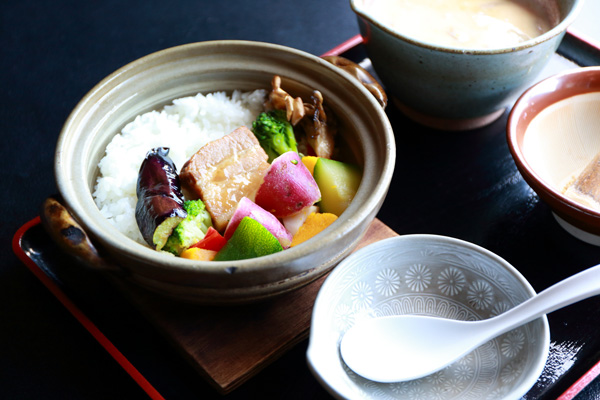
Their gojiru is rich in collagen with cooked diced pork. The restaurant also serves “beauty gojiru”, made with soymilk, targeting women. They also engage in activities to pass on the local food culture to future generations, holding an educational gojiru-cooking workshop for children at an elementary school in town.
Suttate and Kawajima Gojiru are local dishes packed with farmers’ wisdom and Kawajima’s wonders. Fully adorned with the cooks’ creativity, these two local flavors will continue to spread their roots deeply in the region.

